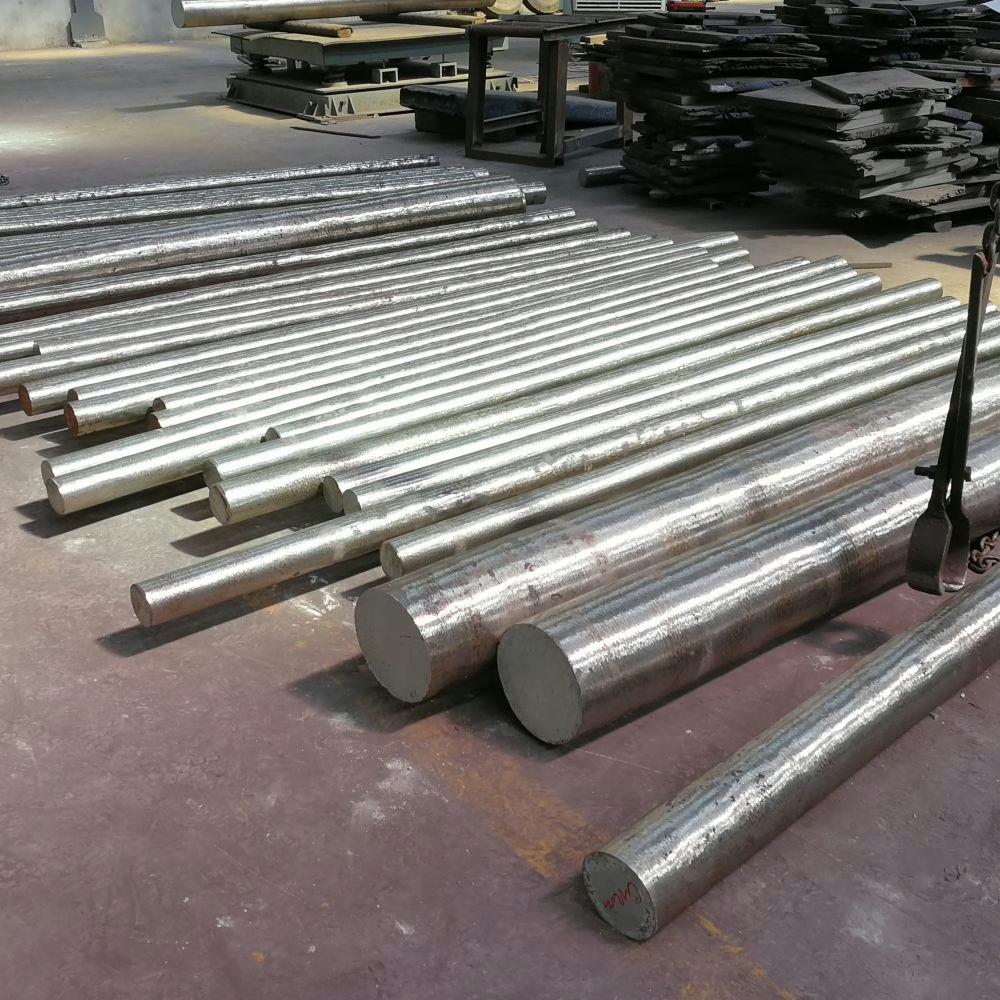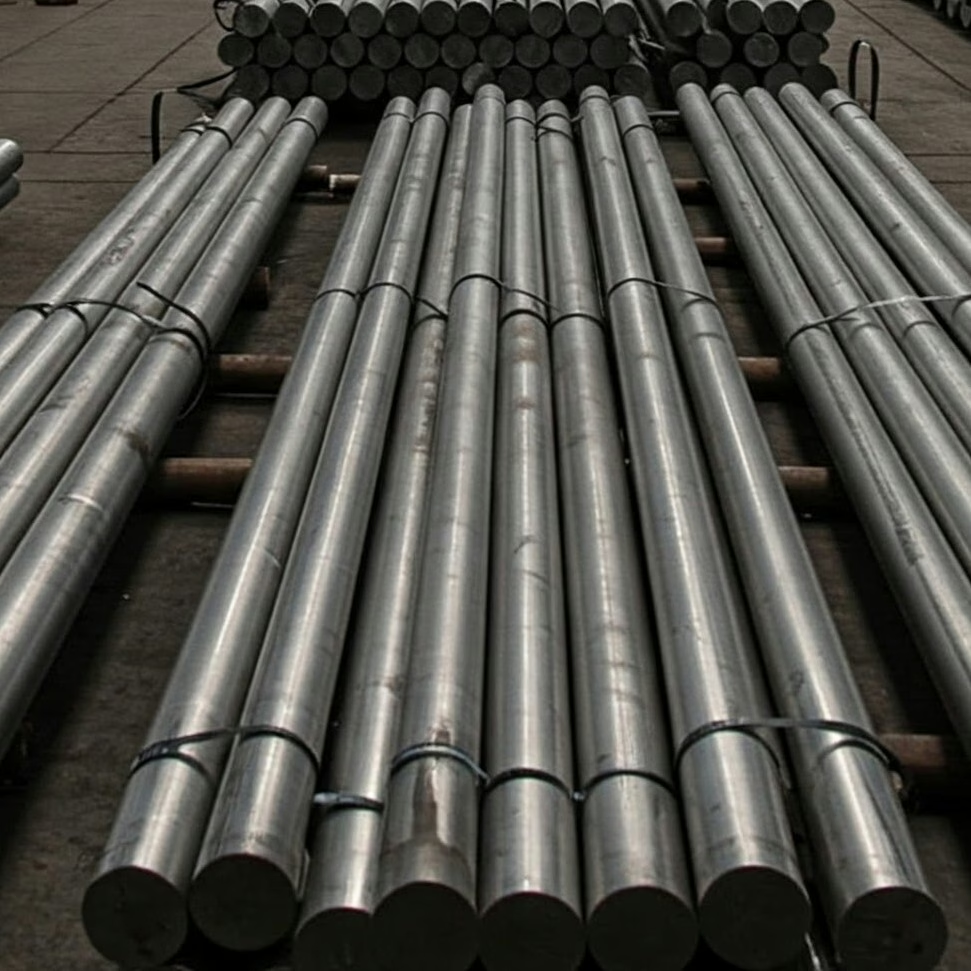
Katalog stali do form do tworzyw sztucznych
Katalog stali do form do tworzyw sztucznych
Kliknij na dowolny produkt, aby zobaczyć szczegóły



Czym jest stal do formowania tworzyw sztucznych
Stal na formy do tworzyw sztucznych jest wykorzystywana głównie do produkcji form do formowania i przetwarzania tworzyw sztucznych. W klasyfikacji jest klasyfikowana jako „stal grupy P”. AISI System klasyfikacji stali narzędziowej do pracy na zimno jest zgodny z normami EN/DIN. Temperatura procesów formowania tworzyw sztucznych wynosi zazwyczaj poniżej 200°C. W porównaniu z formowaniem metali, odporność na ciepło i zużycie stali narzędziowej do formowania tworzyw sztucznych często nie jest krytyczna, ale wymagania dotyczące jakości powierzchni są bardzo wysokie.
Wiele stali na formy do tworzyw sztucznych jest dostarczanych w stanie wstępnie utwardzonym (np. gatunki P20 o twardości 32 HRC, DIN 1.2711 o twardości 40 HRC). Eliminuje to konieczność przeprowadzania końcowej obróbki cieplnej przez producenta form, minimalizując ryzyko odkształceń oraz skracając całkowity czas i koszty produkcji. Stale, które nie są wstępnie utwardzone, są zazwyczaj sprzedawane w stanie wyżarzonym, aby ułatwić formowanie, a następnie utwardzane poprzez obróbkę cieplną.
Konkretne gatunki stali
Do produkcji form do tworzyw sztucznych powszechnie stosuje się kilka określonych gatunków stali narzędziowej, wybieranych na podstawie złożoności części, wielkości produkcji i wymaganego wykończenia powierzchni:
- Stale serii PNajpopularniejsze gatunki to P20 (1,2311), P20S (1,2312) i P20Ni (1,2738). Gatunki niskowęglowe, takie jak P2, P4 i P6, są zazwyczaj stosowane do wnęk frezowanych (frezowanych), gdzie hartowana stalowa piasta jest wtłaczana w bardziej miękki wykrojnik matrycy, aby utworzyć odcisk.
- Stale do pracy na gorąco – H13Doskonała stal na formy do formowania tworzyw sztucznych i odlewów ciśnieniowych. Charakteryzuje się doskonałą odpornością na odpuszczanie, mniejszą skłonnością do pękania i minimalnymi odkształceniami podczas hartowania w powietrzu. Po obróbce cieplnej do wyższej twardości (>50 HRC) zapewnia doskonałą polerowalność i bardzo dobrze reaguje na azotowanie, osiągając wysoką twardość powierzchniową.
- Stale nierdzewne martenzytyczne–420 stal nierdzewna i modyfikacjePowszechnie stosowany w formach wtryskowych, szczególnie do tworzyw sztucznych korozyjnych lub w trudnych warunkach atmosferycznych, ponieważ zapewnia naturalną odporność na korozję bez konieczności chromowania. Po obróbce cieplnej pozwala uzyskać lustrzane wykończenie i dobrą stabilność wymiarową. Jednak odpuszczanie w określonym zakresie temperatur (425-595°C) może powodować kruchość i utratę odporności na korozję.
- Stale odporne na wstrząsy – S7Zalecany do form wymagających bardzo wysokiej odporności na wstrząsy.
- Stale narzędziowe do pracy na zimno (np. A2, D2)Stosowane w zastosowaniach wymagających większej odporności na zużycie, szczególnie przy formowaniu tworzyw sztucznych o właściwościach ściernych (np. tworzyw sztucznych wzmocnionych włóknami).
Właściwości
- Polerowalność i teksturowalność. Stopione tworzywa sztuczne pozwalają na odtworzenie najdrobniejszych szczegółów na powierzchni formy, dzięki czemu idealna, pozbawiona wad powierzchnia ma kluczowe znaczenie dla wyglądu produktu finalnego. Wysoka twardość powierzchni stali formierskiej znacznie poprawia polerowalność i minimalizuje wady polerowania, takie jak „skórka pomarańczowa” (miejscowe umocnienie zgniotowe).
- Twardość i wytrzymałośćWysoka twardość powierzchni i wytrzymałość rdzenia stali na formy do tworzyw sztucznych zapobiegają „zapadaniu się” wnęki pod wpływem wysokich ciśnień wtrysku. Chociaż twardość wstępnie utwardzonych form do tworzyw sztucznych zazwyczaj waha się w granicach 30-40 HRC, można je utwardzić powierzchniowo poprzez nawęglanie lub azotowanie, aby zwiększyć odporność na zużycie.
- Wytrzymałość i odporność na wstrząsyFormy są narażone na wstrząsy mechaniczne podczas pracy (otwieranie/zamykanie) oraz na wstrząsy termiczne wynikające z szybkich cykli nagrzewania/chłodzenia, szczególnie w maszynach o szybkim cyklu. Dobra wytrzymałość może zapobiegać pękaniu.
- Stabilność wymiarowaMinimalizacja zniekształceń lub zmian wymiarów podczas obróbki cieplnej ma kluczowe znaczenie dla precyzyjnych form.
- Obróbka skrawaniemObróbka skrawaniem stanowi znaczną część (do 70%) całkowitych kosztów produkcji form. Stale łatwiejsze w obróbce skrawaniem mogą znacznie obniżyć koszty całkowite.
- Odporność na korozjęNiezbędne podczas przetwarzania tworzyw sztucznych żrących (np. polichlorku winylu (PCW), który może uwalniać HCl podczas rozkładu) lub gdy formy są przechowywane w wilgotnym środowisku.
- SpawalnośćDobra spawalność jest korzystna przy naprawach i konserwacji form, co może wydłużyć żywotność narzędzi.
Obróbka powierzchni
- Nawęglanie:Proces, w którym węgiel jest dyfundowany w powierzchnię w celu zwiększenia twardości i odporności na zużycie, szczególnie w przypadku stali formowych o niskiej zawartości węgla, takich jak P2 i P6.
- Azotowanie: Dyfunduje azot w głąb powierzchni, znacząco zwiększając twardość, odporność na korozję i zmniejszając tarcie. Stal H13 bardzo dobrze reaguje na azotowanie.
- Chromowanie/Niklowanie:Może być stosowana w celu zapewnienia odporności na zużycie lub ochrony antykorozyjnej, szczególnie w przypadku agresywnych tworzyw sztucznych, takich jak PVC. Jednak zastosowanie stali nierdzewnej odpornej na korozję może wyeliminować potrzebę galwanizacji.
- Hartowanie płomieniowe:Służy do miejscowego utwardzania określonych miejsc narażonych na zużycie lub odciski Brinella.
Wyzwania i wady
- Wady polerowania:Mogą występować „otworki szpilkowe” spowodowane wtrąceniami niemetalicznymi oraz „skórka pomarańczowa” będąca wynikiem lokalnego umocnienia odkształceniowego podczas nadmiernego polerowania.
- Problemy z teksturowaniem:Niewłaściwe przygotowanie powierzchni lub niejednorodności mikrostrukturalne mogą prowadzić do nierównomiernych efektów trawienia.
- Zniekształcenia podczas obróbki cieplnej:Mogą wystąpić rozszerzania, kurczenia, odkształcanie i zmiany kształtu, co wymusza konieczność precyzyjnej kontroli i, w idealnym przypadku, stosowania gatunków wstępnie utwardzonych lub utwardzanych na powietrzu.
Aplikacje
Formowanie wtryskowe tworzyw termoplastycznych
Formowanie kompresyjne tworzyw termoutwardzalnych
Formowanie rozdmuchowe i wytłaczanie
Matryce do odlewania ciśnieniowego: stosowane do stopów o niskiej temperaturze topnienia, takich jak stopy cyny, cynku i ołowiu.
Formy do wyrobów szklanych: Do produkcji szkła wykorzystuje się również niektóre stale formierskie, które muszą charakteryzować się wysoką odpornością na zużycie, odpornością na osadzanie się kamienia, wytrzymałością na wysokie temperatury i możliwością polerowania.
Często zadawane pytania
Stal na formy do tworzyw sztucznych to rodzaj stali narzędziowej specjalnie zaprojektowanej do produkcji form stosowanych w formowaniu wtryskowym i tłocznym tworzyw sztucznych. Stale te są wybierane ze względu na doskonałą polerowalność, mikroczystość, obrabialność i stabilność wymiarową.
Tak, plastik można formować w metal. Odbywa się to poprzez procesy takie jak formowanie wtryskowe z wkładką, gdzie plastik jest formowany wokół istniejących już elementów metalowych78, lub poprzez formowanie wtryskowe metalu (MIM), gdzie proszek metalowy jest mieszany ze spoiwem z tworzywa sztucznego, formowany, a następnie spiekany9….
Stale formierskie służą przede wszystkim do wytwarzania form i matryc do kształtowania różnych materiałów, zwłaszcza tworzyw sztucznych, ale także do odlewania ciśnieniowego metali, formowania ceramiki i formowania proszków.
Do typowych rodzajów stali narzędziowych stosowanych do produkcji form należą stale serii P (np. P20, P21, P6), stale serii H (np. H13, H12, H21, H25), stale serii A (np. A2), stale serii D (np. D2) oraz stale nierdzewne martenzytyczne (np. typ 420, 17-4 PH). Wybór zależy od wielkości produkcji, właściwości odlewu i wymaganej dokładności.
Zazwyczaj nie nadają się do bezpośredniego odlewania stopionego metalu w wysokiej temperaturze ze względu na niższą odporność silikonu na temperaturę.
